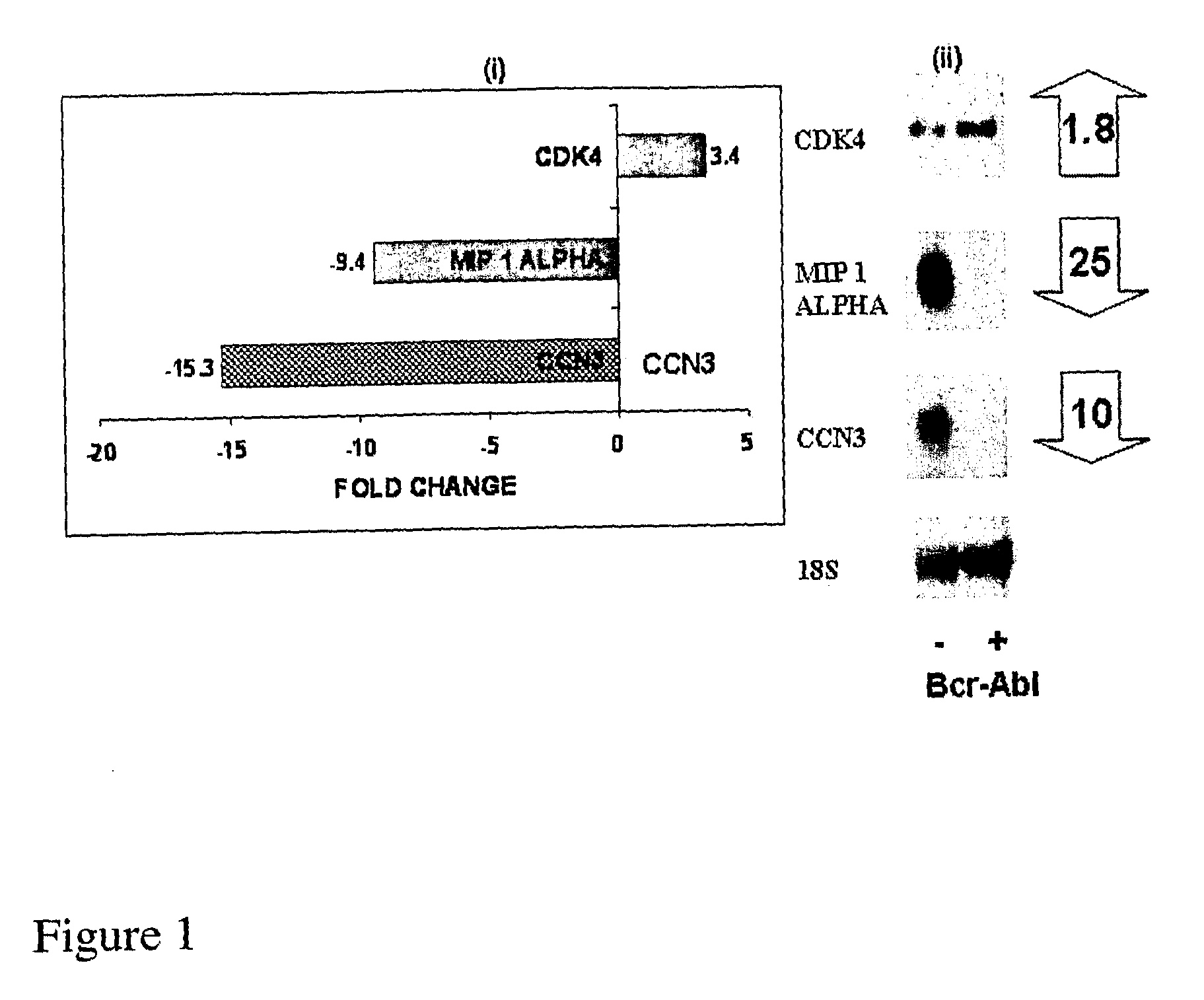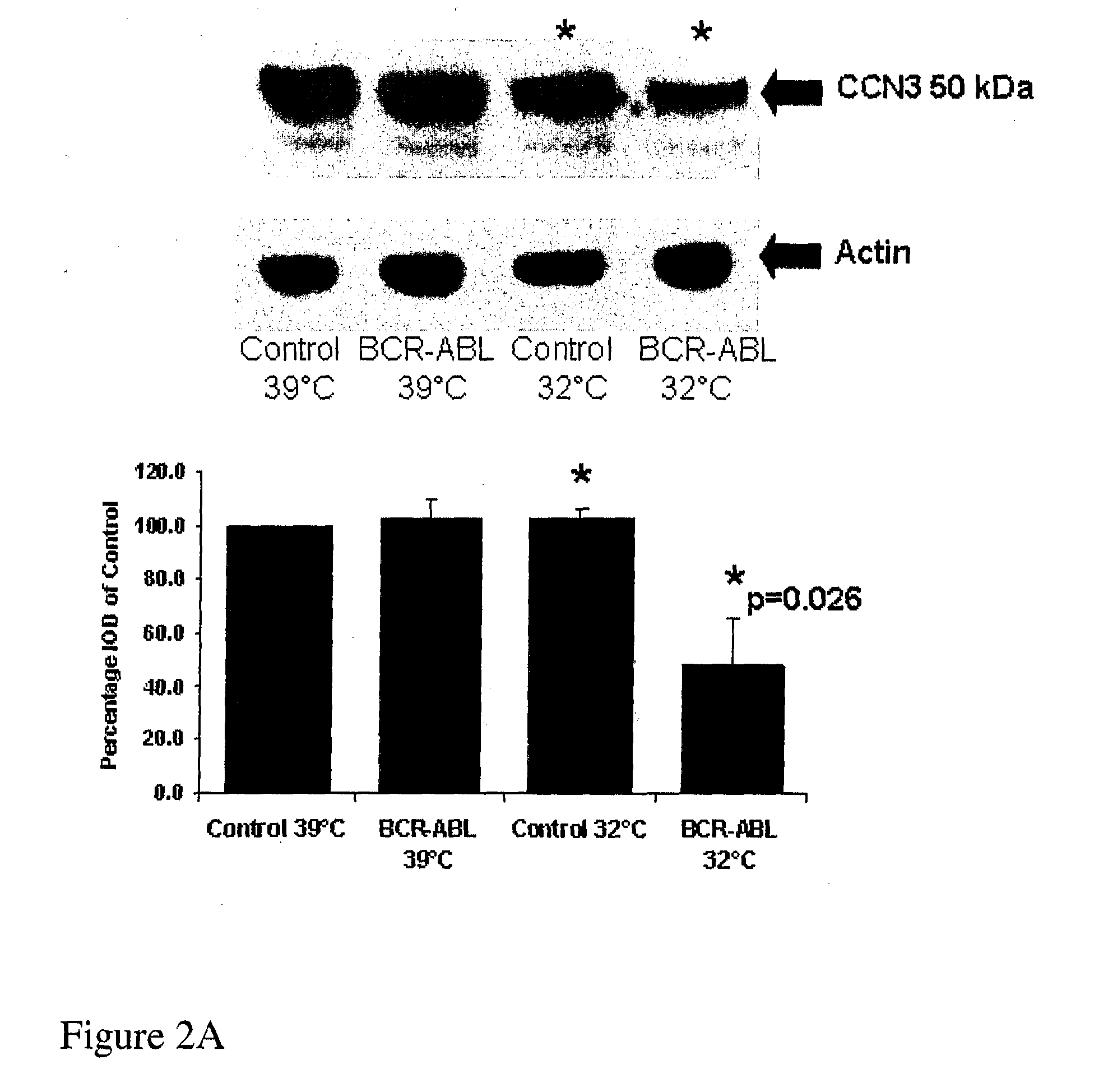CCN3 peptide
a peptide and ccn3 technology, applied in the field of ccn3 peptides, to achieve the effect of increasing the activity of bcr-abl kinas
- Summary
- Abstract
- Description
- Claims
- Application Information
AI Technical Summary
Benefits of technology
Problems solved by technology
Method used
Image
Examples
example 1
CCN3 is Downregulated as a Consequence of BCR-ABL Kinase Activity
[0166]Microarray analysis, to identify genes whose expression was altered as a consequence of 3-24 hours expression of BCR-ABL PTK activity in multipotent FDCP-Mix cells, was performed. These cells are known to show a suppression of apoptosis over this period but have no autonomous proliferation and no IL-3 production. The DNA microarray analysis identified differential expression of 300 genes as result of BCR-ABL activity and included MIP 1α (downregulated 9.4 fold) and CDK4 (upregulated 3.4 fold) which have previously been associated with leukemogenesis. Expression of CCN3 was downregulated by 15-fold as a consequence of BCR-ABL kinase activity by DNA microarray analysis (FIG. 1 panel i). Northern blot analysis confirmed these observations, demonstrating 25-fold downregulation of MIP 1α, 1.8-fold upregulation of CDK4 and 10-fold downregulation of CCN3 (FIG. 1 panel ii).
The Expression of CCN3 Protein is Decreased as a...
example 2
[0175]The functional consequence of expressing CCN3 variants in K562 cells was investigated and the relationship between the structure and the function of the CCN3 growth regulatory protein was studied using constructs coding for full-length CCN3 (domains 1-5), domains 2-5 (NH25), domains 3-5 (NH35) and domains 4-5 (NH45). K562 cells were transfected using the Amaxa cell line nucleofector kit with either vector alone (pCb6+) or vector containing the appropriate construct. The functional consequences of expression were evaluated using flow cytometry, colony formation in methyl cellulose and MTT assay.
Expression of full-length CCN3 in K562 cells showed a significant accumulation of cells in the sub G0 phase of cell cycle at 24 h (mean subG0 21.8%±0.7 compared to control 9.9%±4.6, p=0.028). Full-length CCN3 did not alter cell proliferation capacity by MTT assay at 48 h but reduced colony formation by 33% after 7 days. Expression of the partial length constructs NH25 and NH35 showed a s...
PUM
| Property | Measurement | Unit |
|---|---|---|
| Fraction | aaaaa | aaaaa |
| Fraction | aaaaa | aaaaa |
| Fraction | aaaaa | aaaaa |
Abstract
Description
Claims
Application Information
 Login to View More
Login to View More - R&D
- Intellectual Property
- Life Sciences
- Materials
- Tech Scout
- Unparalleled Data Quality
- Higher Quality Content
- 60% Fewer Hallucinations
Browse by: Latest US Patents, China's latest patents, Technical Efficacy Thesaurus, Application Domain, Technology Topic, Popular Technical Reports.
© 2025 PatSnap. All rights reserved.Legal|Privacy policy|Modern Slavery Act Transparency Statement|Sitemap|About US| Contact US: help@patsnap.com



